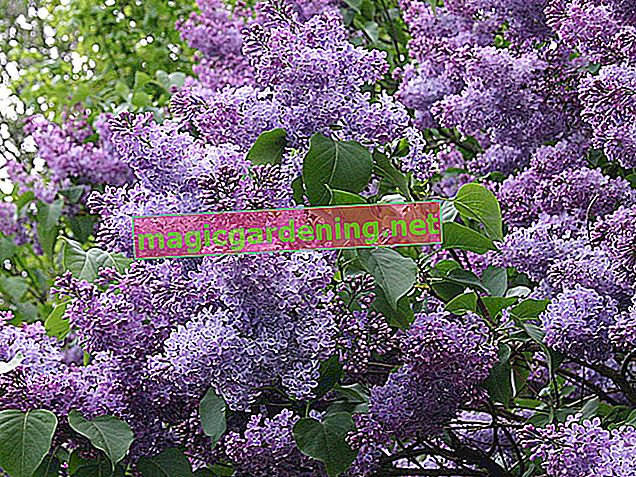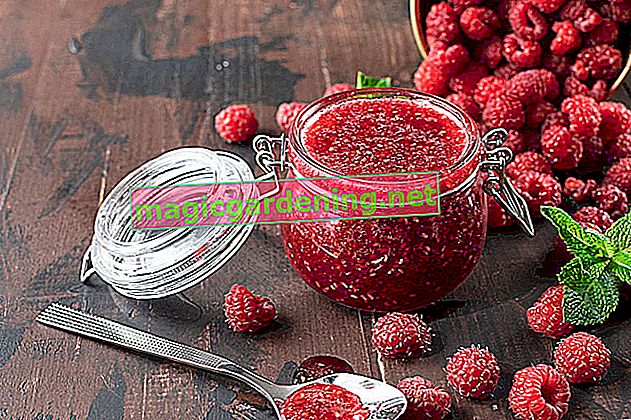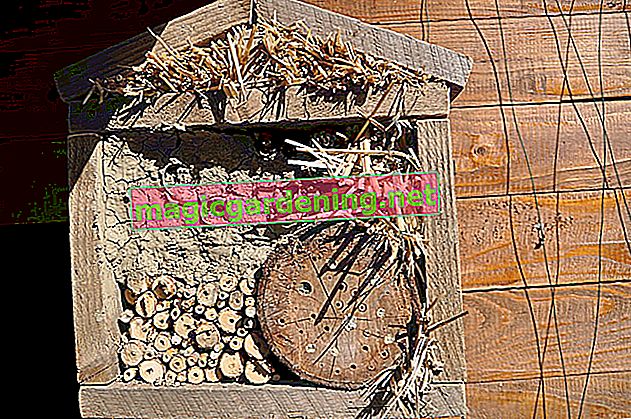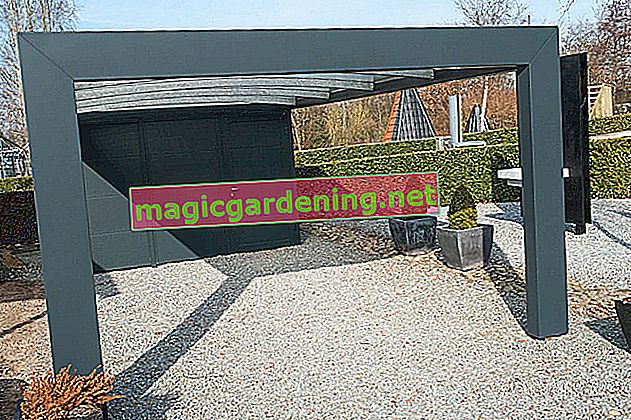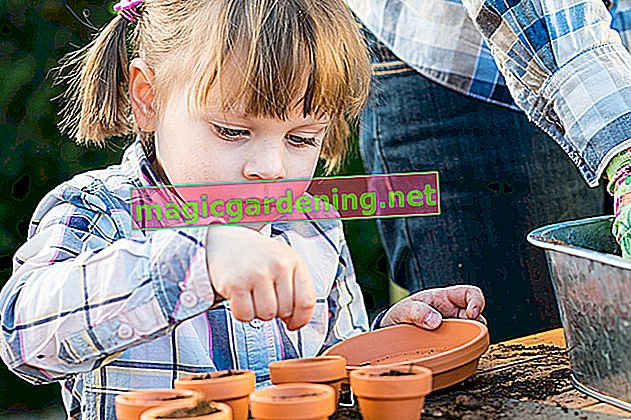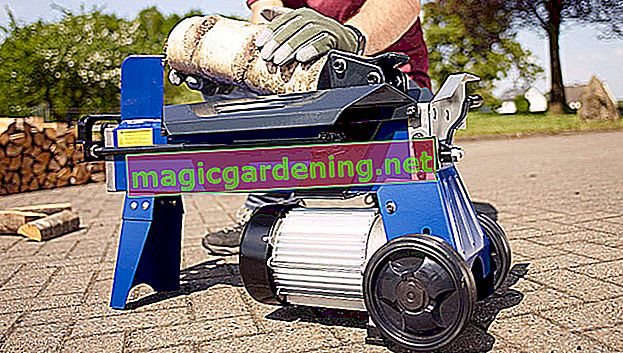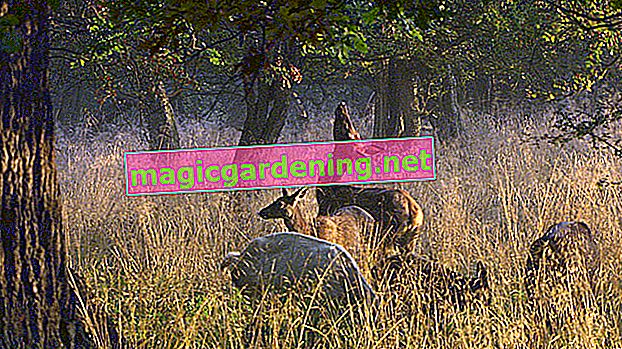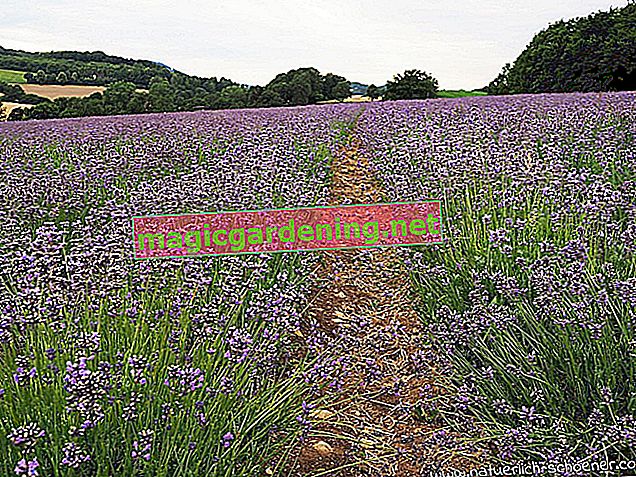
the essentials in brief
- Lava granulate (€ 10.95 at Amazon *) does not rot, is breathable and permeable to water
- Lava granules are used to cover beds, paved roads, improve the soil or simply as decoration
- For indoor plants, lava granules with a grain size of 2 to 8mm are used and mixed with 4 parts of potting soil to form one part of lava granules
Where can I buy lava granules?
As a single substrate, lava granules have so far rarely been found in retail. Most house and garden owners are familiar with this natural product as a grit and as an additive in high-quality potted soil for cacti and Mediterranean plants. We looked around the local and virtual market and found the following purchasing sources for you:
- Hardware stores : Obi, Hagebau, Hornbach, Bauhaus
- Garden center : z. B. Rosenhof Schultheiss (Bad Nauheim), Dehner (more than 100 locations)
- Substrate dealer : z. B. Interbims (Eifel)
- Building material dealer : z. B. Kieskönig (Anhalt-Bitterfeld), Kies-direct (10 locations throughout Germany), Mobau (NRW)
- Online retailers : Amazon, Ebay, Manufactum, Vulcatex
also read
- Focus on orchid fertilizers - tips on dosage and use
- Does lime remove the moss in the lawn? - Tips for use
- Can vinegar control moss? - Tips for use
Late autumn and winter have the best prospects of buying lava granules from local stores. Since salt has been banned as a grit in many municipalities, regional dealers are increasingly integrating lava into their product range as an alternative. Savvy hobby gardeners buy lava granulate in large quantities in big bags or as bulk goods at a significantly reduced price. Buyers who can drive up to the local supplier with a trailer for transport have a clear advantage. A numerical example illustrates the price advantage: 25 kg sack of lava granulate, grain size 8-16 mm, costs from 11.50 euros (0.46 euros / kg). 800 kg Big Bag lava granulate grain size 8-25 mm costs from 135 euros (0.17 euros / kg) plus 99.90 euros shipping costs.
What use is lava granulate suitable for?

Born in the hot core of our planet, lava granules impress with their solid properties. If cooled lava is crushed, a natural product with a wide range of useful application scenarios is created. Pore-rich lava rock has impressive attributes in its luggage. The inorganic material is, among other things, breathable, water-permeable and resistant to rot. The following table summarizes how you can use lava granules skilfully:
| garden | Plant care | Pond / aquarium | grit |
|---|---|---|---|
| Bed cover | Potting soil aggregate | Plant substrate wet zone | Road salt substitute |
| Path reinforcement | Weed suppression | Decorative element pond edge | Grit on snow |
| Soil improvement | Drainage for buckets | Filter medium | |
| Design element | Moisture storage | Substrate in the aquarium |
Lava granulate fulfills its tasks with flying colors if you mix different grain sizes between 2 and 16 mm. The lava stones tilt and fit together more closely by themselves. This simple trick optimizes the use in the bed, as a filter medium, substrate or as grit.
Problem solver in the garden
Lava granules are the hobby gardener's ace up the sleeve for coping with numerous tasks and diverse problems. The natural product is hard-wearing, water-permeable, breathable, durable and has an insulating effect on the floor. Compared to sand, gravel, gravel and crushed stone, lava mulch (€ 10.95 at Amazon *) is lightweight and easy to spread. Lava maintains a harmonious coexistence without conflicts with all plants in the garden. The following list gives an insight into common areas of application for lava granulate in the garden:
- Weed suppression in beds, under hedges and trees, in grass pavers
- Soil loosening as an aggregate in compacted, waterlogged earth
- Plant base for roses, shrubs, conifers, vegetables, flowers, perennials
- Floor fastening for access routes, driveways, work routes, seats
- Heat storage releases stored heat to neighboring plants at night
- Erosion blocker prevents soil erosion during heavy rain and thunderstorms
In summer, lava granules act as mulch to reduce the premature evaporation of irrigation water. This keeps the garden soil moist and cool for longer, which your plants really appreciate. Lava granules convincingly demonstrate this benefit when the natural product cacti and other succulents lies at your feet as mulch. The floral survivors are better able to divide up low water supplies because the valuable water does not evaporate as quickly. Excessive amounts of water quickly insure deeper soil layers because the drainage function of lava gravel prevents harmful waterlogging. In return, Lavakies effectively buffers severe frost so that roots in the ground do not freeze to death.
Digression
Differentiate between lava granulate and lava mulch
The main difference between lava granulate and lava mulch is the grain size. Under the name lava granulate, the trade offers grain sizes between 2 and 8 mm. Grain sizes from 8 to 32 are called lava mulch. However, the boundaries are fluid. Sometimes grain sizes between 8 and 16 mm are offered under both names. Lava sand with a grain size of 0 to 2 mm is rarely found on offer. The fine-grained material is suitable as an alternative for road salt in winter or as quartz sand to sand the lawn.Natural contribution to plant care

If lava granulate comes into play as a substrate component, plants and gardeners alike benefit from numerous advantages. Potting soil becomes loose and airy if you add a few handfuls of lava granules. If you occasionally forget to water, the porous grains will release stored water to the plant roots. Inadvertent pouring over does not lead to damaging waterlogging if a layer of lava granulate lies as drainage on the bottom of the vessel.
Use lava granules in grain sizes from 2 to 8 mm as an aggregate for the substrate of your balcony and indoor plants. As a rule of thumb for measuring the correct amount has proven itself: 4 parts potting soil, 1 part lava granulate. Before planting, cover the bottom of the flower box, (€ 13.18 on Amazon *) pot and tub with a two-finger-thick layer of lava granulate. Ideally, cover the drainage with a water- and air-permeable fleece. This gardener's trick prevents substrate crumbs from settling between the lava grains and negating the drainage effect. Furthermore, the inorganic natural product remains clean so that you can use it again after repotting.
Tips
A good edging is a must if lava granules are used to secure the ground or cover beds directly adjacent to the lawn. If lava chips get between the rotating cutter bars, the dilemma can cause serious damage to the lawn mower. A stable and sufficiently high construction, comparable to a gravel bed border, is recommended.
Beneficial for water worlds
Standing and bubbling water remains crystal clear with lava granules. As a filter medium in ponds and aquariums, lava grains take hard-working cleaning bacteria piggyback so that the water stays clear and clean. An indoor fountain splashes with immaculately clean water when a layer of lava on the bottom absorbs even the tiniest impurities. Aquarists on a tight budget use lava granules as an inexpensive substructure for the substrate. This trick reduces the need for expensive aquarium soil as the upper substrate layer to the last centimeters.
Slip-resistant on ice and snow - lava granules as grit

Slippery paths and smooth driveways are a thing of the past when there is a sack of lava granulate in the storage warehouse in winter. As a grit, the natural product trumps with immediate slip resistance on ice and snow. Furthermore, lava chippings are frost-resistant. Therefore, the granules do not dissolve, as is common practice with road salt. Thanks to a porous structure, lava granulate absorbs melt water, so that the dreaded freezing over moisture is significantly reduced.
As an alternative to road salt, lava granulate is also a good choice because adjacent plants do not suffer from consequential damage. Leaked road salt leaves a picture of misery on hedges, trees and shrubs if it gets into the ground in large quantities and shakes the ecological balance. As a result, salt is strictly forbidden as a grit in many regions. Buy lava granules with a grain size of 2 to 4 millimeters if you want to use an all-round useful and environmentally friendly grit in the future.
frequently asked Questions
What is lava granulate?
Lava granulate is a purely natural product, created from solidified lava. Its outstanding properties include low weight, good water permeability and a high mineral content. Furthermore, lava is completely odorless and does not rot. These attributes make lava granules the ideal soil improver, aggregate for potting soil and grit in winter. The material is very popular as a filter medium for ponds and aquariums. Last but not least, colorful lava granules are useful in creative garden design for natural ground reinforcement.
How do I properly use lava granules for weed suppression?
The knowledgeable use of lava granules against weeds is based on a combination of correct grain size and adequate layer height. A grain size of 8 to 16 mm has proven itself in the garden. Spread the mulch 6 to 8 cm high in the bed for effective weed suppression. Coarser grains and thinner layers leave dandelions, groundmen and cronies too much leeway for growth.
Why is lava granulate so well suited as a filter medium for ponds and aquariums?
The porous surface of lava granulate serves as a welcome settlement area for millions of hard-working cleansing bacteria. These bacteria make a valuable contribution to keeping the water in the pond or aquarium clear and healthy. For this purpose, the filter basket is filled with lava granules. Grain sizes between 8 and 32 millimeters are suitable for use. If necessary, lava can be crushed with a hammer so that it fits into an aquarium filter.
Tips
Lava granulate is well on the way to displacing classic bark mulch as a natural ground reinforcement. The natural product does not rot, is odorless, hard-wearing and does not release any nutrients into the soil. A wide range of warm colors makes lava mulch the ideal design element if you are planning a front yard, a prairie garden or a cottage garden.

